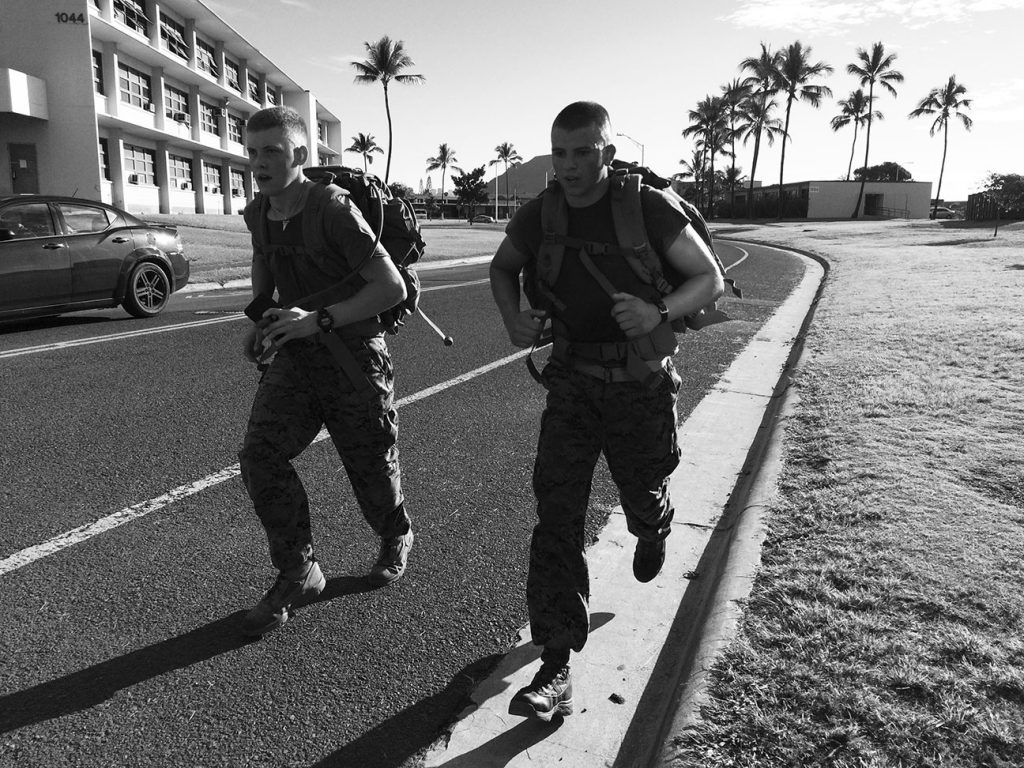
By Rob Shaul, Founder
BLUF
Three weeks of ruck running, and no lower body strength training, maintained strength as assessed via 1 Rep Max Front Squat and Back Squat efforts and resulted in an increased unloaded running assessment. MTI’s take on the Grease the Groove Pull-Up progression increased max rep pull-ups an average of 18%.
Background
Ruck running is a mission-direct fitness demand for many tactical and mountain athletes. With this mini-study, we wanted to test ruck-running’s effect on lower body strength and threshold unloaded running.
As well, we wanted to re-test MTI”s take on the Grease the Groove (GTG) pull-up progression. In a previous mini-study, we found that the GTG progression beat MTI’s “Density” to improve max rep pull-ups and push-ups.
Study Design/Deployment
A small, quick mini-study is a great tool for us to accomplish several things before conducting a larger, longer, more involved study. First, we test the practicality and “churn” the testing protocols in the study. Second, mini-study results can help us quickly identify obvious paths to follow with further research. Mini Studies are the primary tool we deploy for MTI’s Mission Direct Research.
The “mission-direct” emphasis of MTI’s research significantly impacts study design. Ideally, our mini-studies deploy elements that are practical and commonly used/experienced by our mountain and tactical athlete population. As well, ideally, our mini studies are simple enough that the same study can be completed by others, without special equipment, techniques, or expertise.
This study deployed four veteran, remote, MTI lab rats who all completed the same programming.
The first day and last day of this 3.5-week, 5-day/week cycle was a fitness assessment that tested 1RM Front Squat, 1RM Hinge Lift (Dead Lift), Max Rep Pull Ups, and a 1.5-mile run for time.
The lab rats ruck ran carrying 15% of their bodyweight 5 days/week for the following 3 weeks. They also did the GTG Pull Up progression daily … so they ruck ran and did pull ups every day but Saturday and Sunday.
Throughout the cycle, the lab rat’s daily ruck running time increased from 30-60 minutes. Their load remained the same at 15% of bodyweight.
The lab rats re-assessed their max rep pull-ups mid-cycle, and reset the GTG Pull Up progression. In general, the GTG pull-up progression had the lab rats completing 8, single sets of 40-55% of their max-rep pull ups during their work day – no more than 1 set per hour.
Their Monday-Friday daily training was a 30-60 Minute Ruck Run @ 15% bodyweight plus 8 Rounds of 40-55% Max Rep Pull-Ups spread throughout the day.
At the end of 3 weeks the lab rats re-took the initial assessment, and results were compared.
Results/Discussion
The results are below.

All four lab rats maintained or slightly improved their lower body strength as assessed using a 1RM Front Squat and Hinge Lift. In addition, their 1.5-mile unloaded run improved by an average of 8%. Strength was maintained despite no lifting during this cycle and unloaded running improved despite no unloaded running.
We didn’t know what to expect from ruck running’s impact on lower body strength. Intuitively we know ruck running has a significant lower body strength demand – more so than unloaded running. This mini study suggests that ruck running does a good job at maintaining lower body strength at least in the short term.
Ruck running’s effect on unloaded running could have also been predicted. The modest 8.28% average improvement in the 1.5-mile unloaded assessment is less than we’ve seen following a concentrated MTI running improvement plan but does seem to indicate that ruck running maintains or slightly improves unloaded running.
The overall takeaway is that ruck running is a unique aerobic fitness mode that both maintains strength and unloaded running fitness.
Max rep pull-ups improved by an average of 19% following the GTG progression. This is right in line with the Density improvement we saw with the larger, previous mini-study, and significantly less than the GTG improvement we saw previously. However, for that previous study, some outlier lab rats increased their push up and pull up max reps by 100% or greater, and our sense was that these individuals skewed the GTG results for that study. This follow up mini study confirms this.
Overall, the GTG and MTI “Density” progression for improving bodyweight strength endurance are equally effective.
Next Steps?
I might consider re-completing this study on the ruck running side by expanding it – and using a “control group” of lab rats who complete the running protocol unloaded. This would answer the question of whether or not unloaded running also maintains lower body strength.
Questions, Feedback, Comments? Email rob@mtntactical.com
You Might Also Like MTI’s Rucking Improvement Plan
